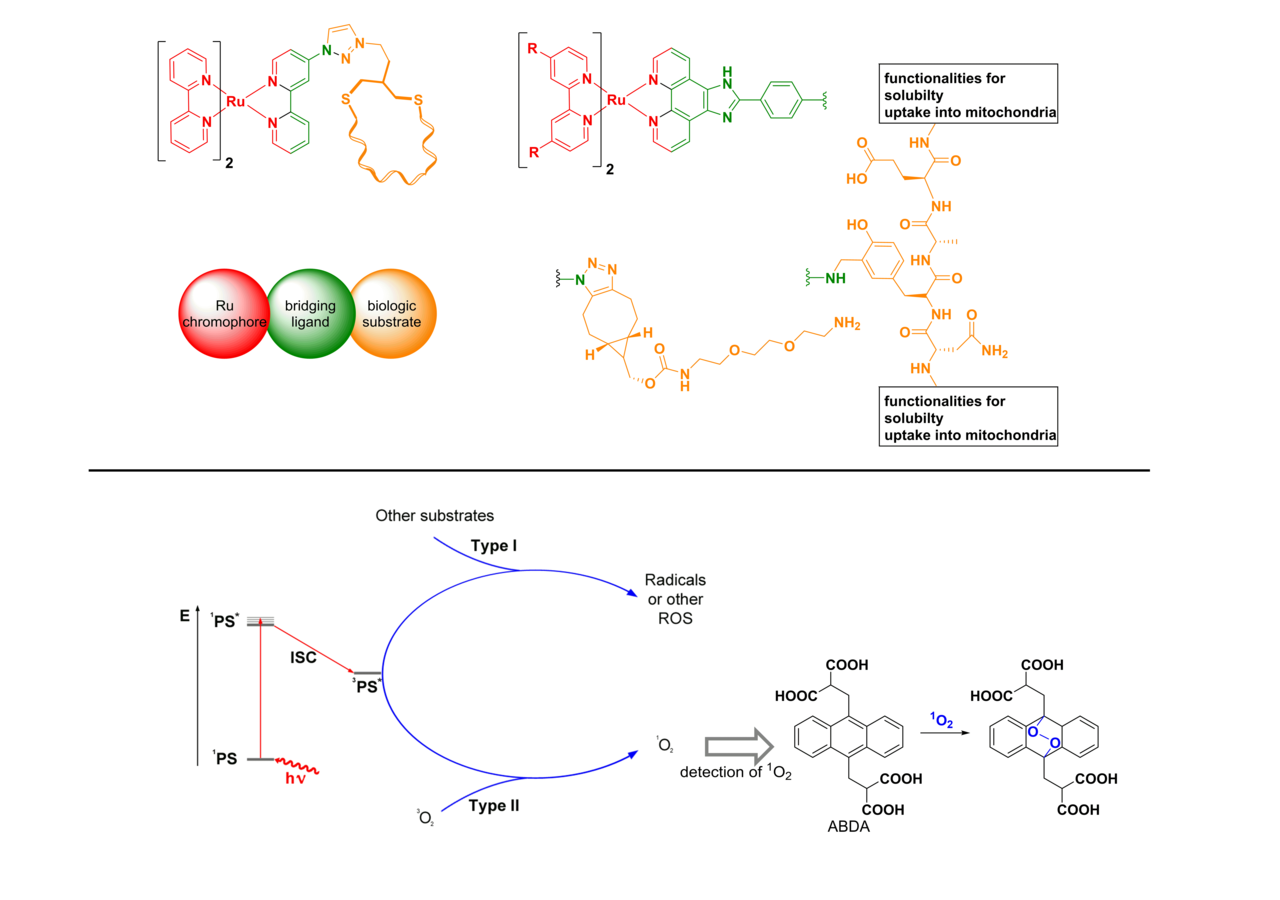Photodynamic Therapy
The topic of photodynamic therapy (PDT) is an alternative treatment method - beside chemotherapy, surgery or radiation therapy - to fight cancer. Photoactive molecules trigger an energy transfer onto oxygen or parts of the cell to initiate cell death. This started with organic photosensitizers and today transition metal complexes get important more and more.
Recently, the group of S. A. McFarland developed the first system of Ru(II) containing photodynamic derivatives which show promising results and entered the clinical trials. These results promoted the research on Ru(II) polypyridyl complexes to act as PDT therapeutics. In the last couple of years, we synthesized and characterized Ru(II) polypyridine complexes attached to biochemical substrates like peptides, proteins or sugars via different coupling strategies (CLICK chemistry, transition metal catalyzed cross couplings and/or peptide bonds) to selectively target different cell compartments.

Due to our research on catalytically active systems of RutpphzMLn, we have a superb expertise on expanded phenanthroline systems like tpphz or dppz. The latter is a prototype system for intercalation into the DNA framework. In the future we want to develop different expanded systems which can not only enter the cancer cell, but also target the DNA via intercalation.
Future work will encounter the following topics:
- Optimization of synthetic strategies towards clickable transition metal complexes.
- Trisheteroleptic photosensitizers with multiple functionalities.
- Exchange of the Ru(II) center towards Os(II) to enter the therapeutic window.
- Coupling of additional dyes to enlarge extinction and absorption window.
- DNA intercalation studies with dppz moiety or pyrene substituents
Development of photodynamic derivatives:
[11] N. Zabarska, A. Stumper, S. Rau, Dalt. Trans. 2016, 45, 2338–2351.
[12] N. Zabarska, D. Sorsche, F. W. Heinemann, S. Glump, S. Rau, Eur. J. Inorg. Chem. 2015, 2015, 4869–4877.
[13] T. Wang, N. Zabarska, Y. Wu, M. Lamla, S. Fischer, K. Monczak, D. Y. W. Ng, S. Rau, T. Weil, Chem. Commun. 2015, 51, 12552–12555.
[14] S. Chakrabortty, B. K. Agrawalla, A. Stumper, N. M. Vegi, S. Fischer, C. Reichardt, M. Kögler, B. Dietzek, M. Feuring-Buske, C. Buske, u. a., J. Am. Chem. Soc. 2017, doi: jacs.6b13399.
[15] A. Stumper, M. Lämmle, A. K. Mengele, D. Sorsche, S. Rau, Eur. J. Inorg. Chem. 2018, 586-596.
[16] A. Stumper, T. D. Pilz, M. Schaub, H. Görls, D. Sorsche, K. Peuntinger, D. Guldi, S. Rau, Eur. J. Inorg. Chem. 2017, 3799-3810.
